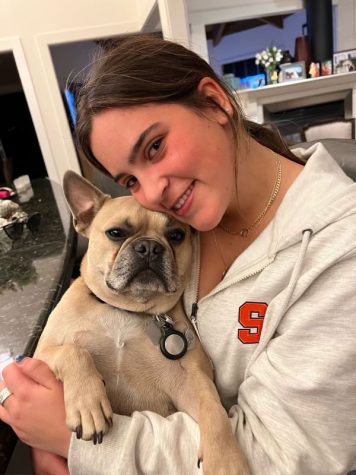When Czech folk singer Hana Horka intentionally contracted COVID-19 in January of 2022, she expected to endure a few days of discomfort in exchange for immunity. Instead, she became extremely sick, passing away two days after testing positive. Horka’s experience demonstrates a dangerous and potentially deadly reaction to COVID-19.
The past two years have been life-altering for everyone, resulting in a common mentality of getting COVID-19 “over with.” Expectedly, nobody has enjoyed wearing masks or distancing from friends. And, as we continue to hear stories from those who test positive despite the seemingly endless mandates, it seems to some that infection is inevitable. While most do not intend to take action on the statement as Horka did, the idea has tempted many. Over the last months, the same question has resurfaced over and over again: “If we are all going to get COVID-19 eventually, why wait?”
While this idea may be appealing, it is incredibly flawed. Dealing with COVID-19 is not as easy as we imagine. The idea of “getting COVID-19 over with” is dangerous and insensitive to those vulnerable to the disease.

Contracting COVID-19 takes a larger toll on one’s health than they might assume, especially with the arrival o
f new variants. Similar to our mandates, COVID-19 is evolving. As additional variants emerge, such as Alpha, Delta and most recently, Omicron, antibodies have to fight off more complex versions of the virus. After receiving a vaccine or being infected, antibodies substantially increase and provide temporary immunity. So yes, being infected may give you temporary immunity. But, according to Yale biology and biostatistics professor Jeffrey Townsend, this protection only lasts for a few months. As antibodies wane, it becomes increasingly difficult to defend your body, and rates of immunity decrease. Townshend found that post-infection immunity allows for only three months of protection. Therefore, by contracting COVID-19, you are not “getting it over with.” Instead, you are getting infected for a mere 90 days of protection, a trade-off that can prove to be fatal, as in Horka’s case.
While the Omicron variant has proven to have less severe symptoms, mild cold-like reactions are not guaranteed. Even if hospitalization is not as frequent as previous variants, it’s common to spend multiple days relatively sick with Omicron. Additionally, the risk of “long COVID-19” is still present. Long COVID-19 occurs when symptoms appear weeks or months after infection and can present as blood clots, kidney issues, fatigue and anxiety. According to the World Health Organization, “One in 10 people still experience persistent ill-health 12 weeks after having COVID-19.”
Scientists and public health officials are still unsure of Omicron’s relation to long COVID-19. Bob Wachter, the chair of the department of medicine at the University of California, San Francisco, stated, “After two years, we don’t understand much about long COVID-19 and don’t know its prevalence with Omicron after vaccination… [Long COVID-19 is] a lingering concern for me as I think about the prospect of getting even a ‘mild’ case of Omicron.” There is still so much to learn about COVID-19, specifically the Omicron variant and its lasting effects.
The idea of getting COVID-19 over with is appealing to many because the stakes seem so low. Being surrounded by people that are not immunocompromised or high-risk makes COVID-19 appear as a minimal threat to one’s health. The lack of risk results in support for natural herd immunity. Herd immunity has been framed as an attainable goal regarding COVID-19. However, natural herd immunity is unlikely and dangerous. In addition to the probable risk of reinfection, a large percentage of the population would have to healthily recover to reach herd immunity in a natural manner. According to the Mayo Clinic, 70 percent of the population would have to recover to stop the pandemic. This enormous number of infections, nearly 200 million, would lead to countless health complications and deaths. Therefore, the best method of herd immunity is vaccination, as it provides longer-lasting protection without the risk of enduring sickness.
Throughout the COVID-19 pandemic, we have seen frequent changes in mandates; it feels like every month there is a new guideline. And because these guidelines are so frustrating for all, it’s
easy to forget their purpose. While those who are uncomfortable with the new Redwood mandate can wear their own mask, they can’t make others do the same. As Bill Miller, an epidemiologist at Ohio State University explains, “You might have made a conscious decision to allow yourself to be exposed and infected, those people have not made that same choice.” The idea of “getting COVID-19 over with,” therefore, is self-interested. The most proactive and responsible steps you can take to avoid the difficulties of COVID-19 are to get vaccinated and avoid suffering the fate of Hana Horka.







